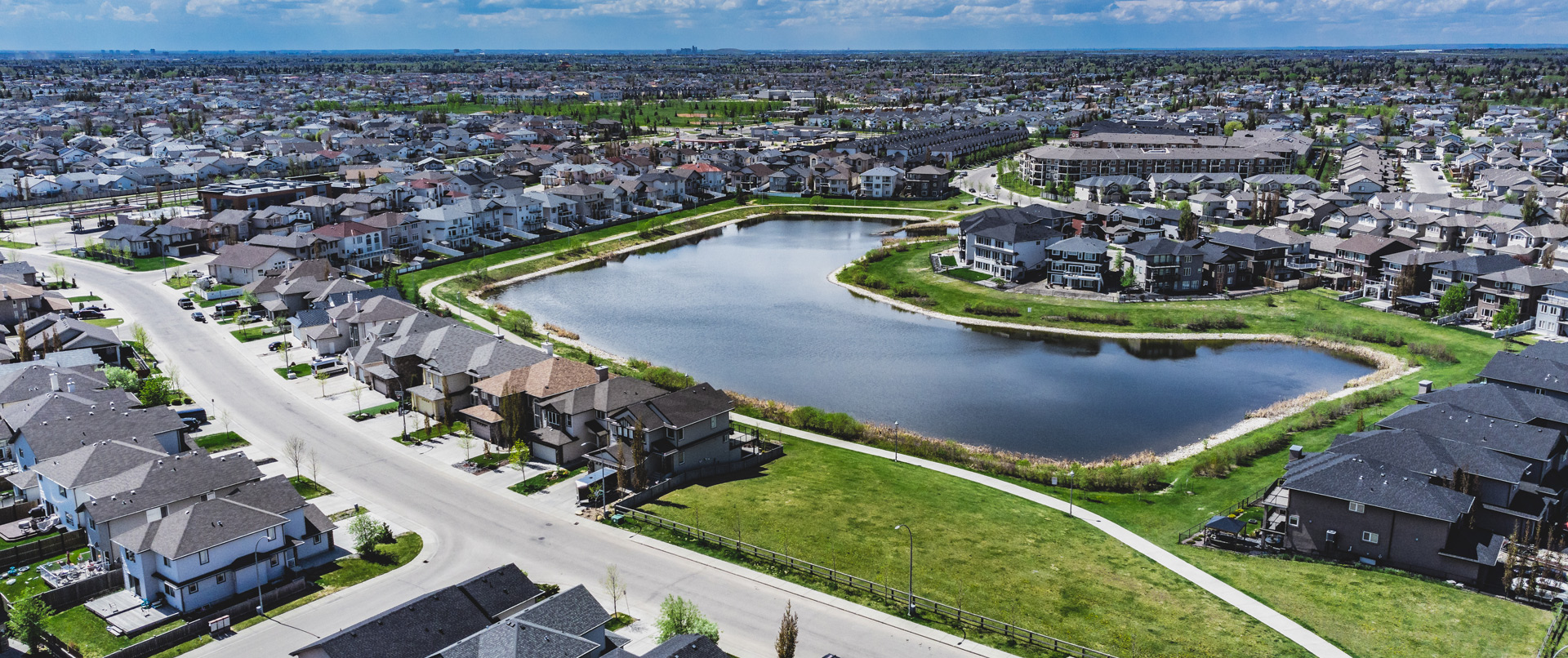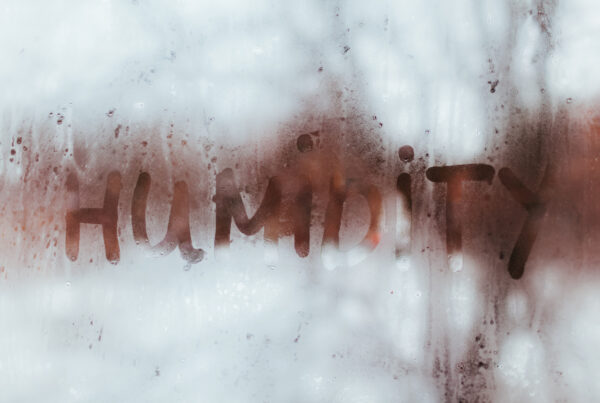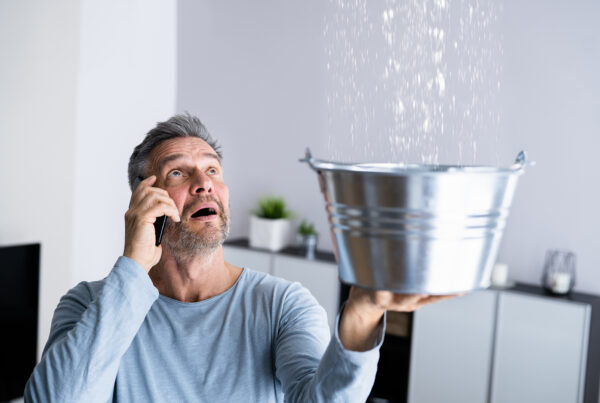Stormwater pond maintenance in HOA communities is crucial for managing rainwater runoff and preventing flooding. In Chicago, these ponds are vital in keeping neighborhoods safe and attractive. But who is responsible for maintaining them? And what exactly goes into maintaining stormwater ponds in the first place?
What is Stormwater Pond Maintenance in HOA Communities?
Stormwater pond maintenance involves regular inspections, cleaning, and repairs to keep ponds functional and safe. These ponds collect and store rainwater runoff, helping manage stormwater flow and prevent flooding. In Chicago, where there are heavy rains and urban development, stormwater management is essential.
One of the most common types of stormwater ponds is retention ponds. These ponds help maintain a permanent pool of water to control flooding, filter pollutants, and improve the quality of water.
For these very reasons, retention ponds in HOAs are very prevalent. To ensure these benefits, HOAs must perform routine maintenance. This includes removing debris, managing vegetation, and monitoring water quality.
Stormwater maintenance in HOA communities is equally important for local and state regulations compliance. The Illinois Environmental Protection Agency (IEPA) sets strict stormwater management rules in Chicago. Boards must follow these guidelines to avoid penalties and protect their communities.
Who is Responsible for Maintaining HOA Ponds?
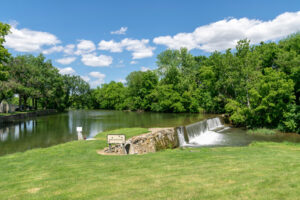
In most cases, the HOA is responsible for maintaining stormwater ponds in their community. The HOA must conduct regular inspections, debris removal, and necessary repairs. The HOA must also ensure compliance with local and state regulations to avoid legal issues.
In Chicago, the IEPA enforces stormwater management requirements under the Clean Water Act. Associations must follow these rules to prevent water pollution and flooding. Proper maintenance can also preserve property values within the community.
Not all HOAs are solely responsible for stormwater maintenance. Some share maintenance duties with local municipalities and many others hire professional contractors. Board members should review their governing documents to understand maintenance responsibilities and requirements.
The Importance of Stormwater Maintenance in HOA Communities
Stormwater maintenance is crucial for several reasons. First, these ponds control the flow of water, thereby preventing floods and property damage. They also help ensure water quality by filtering pollutants.
Another benefit of stormwater pond maintenance in HOAs is safety. When HOAs neglect these ponds, they can attract mosquitoes and cause drowning risks.
Chicago and many other cities have strict regulations surrounding stormwater maintenance. If nothing else, HOAs should invest in proper maintenance to avoid liability and monetary penalties.
Speaking of costs, preventive maintenance is always cheaper than repairs. By ensuring routine maintenance of stormwater ponds, associations can avoid expensive repairs and replacements.
Finally, clean and well-maintained ponds contribute to the beauty of the community. With increased aesthetics come higher property values. Proper stormwater maintenance can protect homeowners’ investments and make them feel more satisfied.
Stormwater Pond Compliance in Chicago
Homeowners associations must ensure compliance with local and state stormwater maintenance regulations. In Chicago, that means adhering to the standards set by the IEPA, which is responsible for regulating stormwater management under the Clean Water Act.
Board members should consult an expert in the field to ensure compliance. That said, key requirements of the IEPA include the following:
- Regular Inspections. Homeowners associations must regularly inspect ponds to ensure they are safe and functional.
- Water Quality Standards. Boards should ensure acceptable water quality levels to help protect local ecosystems.
- Erosion Control. The HOA should adopt erosion control measures and proper vegetation to avoid sediment buildup.
- Permits and Reporting. Homeowners associations may need licenses for modifications or repairs. Moreover, they must report maintenance activities to the agency.
- Emergency Plans. In case of flooding or pond failure, HOAs must have an emergency plan in place.
HOA Stormwater Pond Maintenance Checklist
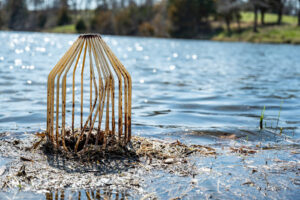
Many HOA communities find it challenging to maintain stormwater ponds effectively. Having a detailed maintenance checklist can greatly help. This checklist can ensure that the HOA addresses all aspects of pond maintenance. In doing so, the HOA can ensure compliance, extend the pond’s lifespan, and provide a safe and functional pond for everyone.
Here is what to include in a checklist for stormwater pond maintenance in HOAs.
- Regular Inspections
- Check for erosion, blockages, and structural damage
- Inspect pipes, outlets, and overflow systems
- Look for signs of pollution or algae growth
- Debris And Trash Removal
- Remove trash, fallen branches, and other debris regularly
- Clear any blockages in inlets and outlets
- Vegetation Management
- Maintain shoreline vegetation to control erosion
- Trim overgrown plants to prevent clogging
- Remove invasive species that harm the ecosystem
- Sediment Control
- Measure sediment levels and remove excess buildup
- Schedule dredging to maintain pond depth (as needed)
- Water Quality Monitoring
- Test water for pollutants such as chemicals and bacteria
- Address any water quality issues immediately
- Erosion Control
- Stabilize eroded banks with vegetation or other erosion control measures
- Repair damaged embankments to prevent further erosion
- Equipment Maintenance
- Clean and maintain pumps, aerators, and fountains
- Ensure all equipment functions properly
- Compliance Documentation
- Keep records of inspections, maintenance, and repairs
- Document compliance with local, state, and federal regulations
Hiring Professional Pond Maintenance Services
Homeowners associations don’t usually have the right tools and expertise for pond maintenance. Board members are volunteers from the community, so they are often well-versed in other fields. This is why many HOAs hire professional contractors for stormwater pond maintenance.
Professionals have the expertise, equipment, and knowledge of local regulations to perform regular inspections, cleanings, and repairs more efficiently. Hiring a contractor can be challenging for many HOAs. For this reason, associations should exercise caution and care during the hiring process.
When hiring a professional pond maintenance contractor, an HOA should check for proper licenses and insurance and ensure that the contractor is familiar with local regulations. It is paramount that the board review service contracts and pricing carefully. Board members should also ask for references and check online reviews for assurance.
The Role of Homeowners in Pond Maintenance
Homeowners can also help maintain stormwater ponds. Board members should educate homeowners about the importance of proper maintenance and encourage them to report any issues they see, including erosion, pollution, and algae growth.
Additionally, homeowners should practice proper waste disposal. They should not dump any yard waste or chemicals in or even near the pond. Doing all this can help ensure retention ponds’ safety, functionality, and beauty. At the same time, HOAs can avoid costly repairs and legal risks.
The Final Word
Stormwater pond maintenance in HOA communities is essential for safety, aesthetics, and regulatory compliance. In Chicago, HOAs are generally responsible for maintaining these ponds. Having a checklist and hiring a professional contractor can make the job much easier.
Hillcrest can help communities with stormwater maintenance management. Call us today at 630-627-3303 or contact us online to request a proposal!

